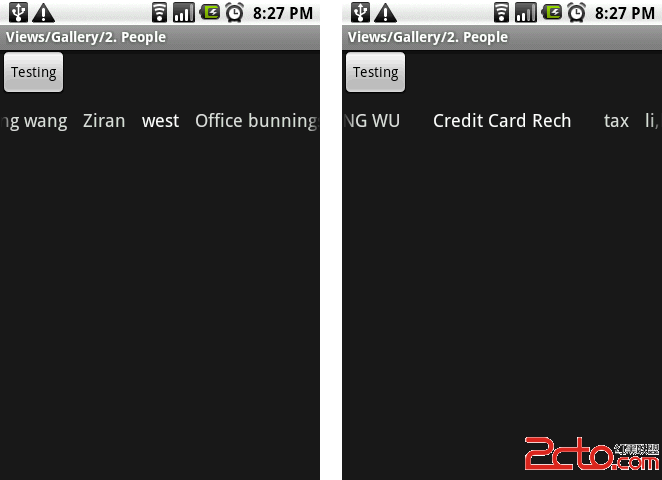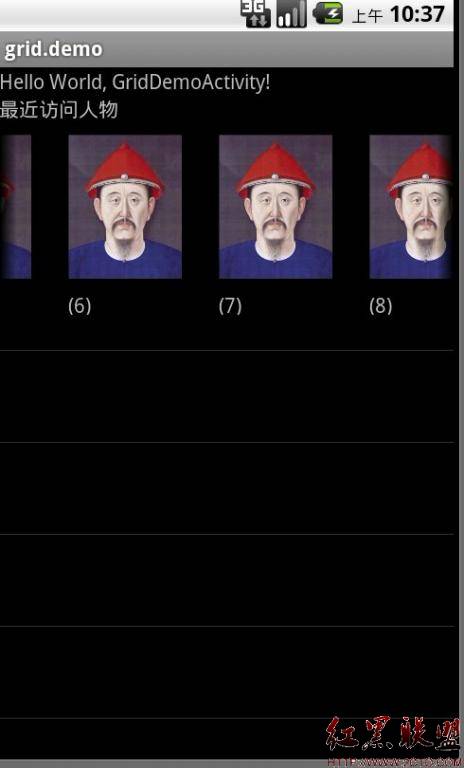Android ApiDemos示例解析(38):App->Service->Foreground Service Controller
和Windows中的Service类似,Android系统也提供了一种称为“Service”的组件通常在后台运行。Activity 可以用来启动一个Service,Service启动后可以保持在后台一直运行,即使启动它的Activity退出或是切换到别的应用Service也能保持运行状态。
Service 可以以两种形式存在:
Started 当一个如Activity使用startService()来启动一个Service,一旦Service启动后,就不受启动它的Activity控制,可以在后台长期运行,通常这种Service在后台执行某个费时操作(如下载文件)不会向启动它的Activity返回结果。
Bound 为Activity或是其它程序部件使用bindService()来启动Service。Bound Service提供了一种Client/Service方法允许调用Service的Activity与Service进行交互:发送请求,取得结果,并支持进程间通信。 一般Bound Service的生命周期和启动它的Activity相同,多个Activity可以同时绑定一个Service。 当所有Activity 都断开与Service之间的绑定时。Service自动结束。
虽然Service可以有上述两种表现形式,这只是为了说明上的方便,实际上同一个Service可以同时以两种方式存在,只要实现两种方法所定义的接口函数就可以了。
创建一个Service,首先需要定义一个Service的子类,然后根据需要重载Service定义的一些核心方法:
onStartCommand() 当一个Activity调用startService时,Android系统会调用Service的onStartCommand()方法, 前面说过使用startService启动的Service会在后台长期运行,不受启动它的Activity控制,因此应用程序有责任来停止Service,Service也可以调用stopSelf来停止自身。
onBind() 当一个Activity 使用bindService()来绑定Service时Android系统会调用Service的onBind方法,onBind需要返回一个IBind对象给调用者(Client)。Client然后可以使用IBind提供的方法来使用Service。
onCreate() Service第一次创建时被调用,和Activity的onCreate类似。
onDestroy() Service退出时调用。
定义了Service类和实现相应方法后,和Activity一样,也需要在AndroidManifest.xml中定义这个Service:
<manifest … >
…
<application … >
<service android:name=”.ExampleService” />
…
< /application>
< /manifest>
和Activity一样,也可以为Service定义Intent Filter,如果你不想共享这个Service,可以将android:exported属性定义为false。
通常情况下Service在后台运行,当Android也支持Service运行在前台,运行在前台的Service必须在屏幕顶端的Status Bar提供一个Notification以提示用户有Service在运行。比如提供个Media Player使用的Service运行在前台,而在标题栏显示当前曲目。
本例Foreground Service Controller就显示了一个在前台运行的Service, 前台运行的Service可以通过调用startForeground()使Service在前台运行。stopForeground停止前台运行,但Service本身不会停止。 startForeground,stopForeground是从2.0开始支持的,之前的版本采用setForeground。
本例为了支持2.0之前和2.0之后的版本,采用了Reflection的方法来来查找当前版本是否含有startForeground和stopForeground,如果有则调用,没有则还是使用setForeground。
如果找到的话,以下的变量用来存储startForeground和stopForeground方法。和本例Service不相关,就不详述了。只要知道startForegroundCompat 和stopForegroundCompat的功能就是startForeground 和stopForeground就行了。
[java] view plaincopyprint?
private static final Class[] mStartForegroundSignature = new Class[] {
int.class, Notification.class};
private static final Class[] mStopForegroundSignature = new Class[] {
boolean.class};
private Method mStartForeground;
private Method mStopForeground;
private Object[] mStartForegroundArgs = new Object[2];
private Object[] mStopForegroundArgs = new Object[1];
private static final Class[] mStartForegroundSignature = new Class[] {
int.class, Notification.class};
private static final Class[] mStopForegroundSignature = new Class[] {
boolean.class};
private Method mStartForeground;
private Method mStopForeground;
private Object[] mStartForegroundArgs = new Object[2];
private Object[] mStopForegroundArgs = new Object[1];
下面来看看ForegroundService的代码:
首先是必须作为Service的子类:
[java] view plaincopyprint?
public class ForegroundService extends Service
public class ForegroundService extends Service
因为是作为“Started” Service来设计的,因此需定义onStartCommand ,同样onStartCommand也是在Android 2.0之后添加的,2.0之前为onStart。本例为了支持所有版本,两个方法对实现了,对应2.0之后的版本,只会调用onStartCommand,2.0之前的只会调用onStart
[java] view plaincopyprint?
// This is the old onStart method that
// will be called on the pre-2.0 platform.
// On 2.0 or later we override onStartCommand() so this
// method will not be called.
@Override
public void onStart(Intent intent, int startId) {
handleCommand(intent);
}
@Override
public int onStartCommand(Intent intent,
int flags, int startId) {
handleCommand(intent);
// We want this service to
//continue running until it is explicitly
// stopped, so return sticky.
return START_STICKY;
}
// This is the old onStart method that
// will be called on the pre-2.0 platform.
// On 2.0 or later we override onStartCommand() so this
// method will not be called.
@Override
public void onStart(Intent intent, int startId) {
handleCommand(intent);
}
@Override
public int onStartCommand(Intent intent,
int flags, int startId) {
handleCommand(intent);
// We want this service to
//continue running until it is explicitly
// stopped, so return sticky.
return START_STICKY;
}
onStartCommand 可以有返回结果,这个返回值告诉Android系统当这个Service被Kill之后(比如当系统内存不足时)后续操作。START_STICKY 表示系统Kill这个Service之后,如果重新创建这个Service时在调用onStartCommand ,不会将最后的Intent作为参数传入,也就是说intent=null. START_REDELIVER_INTENT则会传入被杀前未处理的最后一个Intent。
本Service不作为Bind Service ,因此通过一个空实现:
[java] view plaincopyprint?
@Override
public IBinder onBind(Intent intent) {
return null;
}
@Override
public IBinder onBind(Intent intent) {
return null;
}
最后看看如何启动/停止这个Service, Controller 是作为这个Service的控制类来实现的,提供了前台启动,后台启动,和停止Service操作:
[java]
private OnClickListener mForegroundListener
= new OnClickListener() {
public void onClick(View v) {
Intent intent
= new Intent(ForegroundService.ACTION_FOREGROUND);
intent.setClass(Controller.this,
ForegroundService.class);
startService(intent);
}
};
private OnClickListener mBackgroundListener
= new OnClickListener() {
public void onClick(View v) {
Intent intent
= new Intent(ForegroundService.ACTION_BACKGROUND);
intent.setClass(Controller.this,
ForegroundService.class);
startService(intent);
}
};
private OnClickListener mStopListener = new OnClickListener() {
public void onClick(View v) {
stopService(new Intent(Controller.this,
ForegroundService.class));
}
};
private OnClickListener mForegroundListener
= new OnClickListener() {
public void onClick(View v) {
Intent intent
= new Intent(ForegroundService.ACTION_FOREGROUND);
intent.setClass(Controller.this,
ForegroundService.c
补充:移动开发 , Android ,




